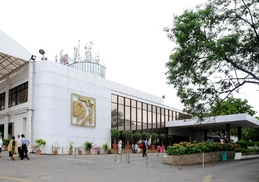
+91 8095511877

+91 8095511877
Epilepsy is a disorder where you have recurrent seizures. You have seizures or fits due to abnormal electrical activity in your brain.
During a fit, your behavior will be strange. You will act as if you are not aware of the surroundings. There may be unusual movements of your body. Sometimes, you may even lose consciousness.
Some of the common signs are
These signs may vary based on the type of seizure. However, you will show the same signs during the different spells.
There are two main types.
There are two subtypes of focal seizures.
There are six subtypes of generalized seizures.
About 50% of the cases have no reason. Other cases may have reasons such as
It can cause some other issues as well such as
There are many groups of antiepileptic medications for treating epilepsy. Your doctor will decide the right one as per your age, type of seizure, and your general condition.
You have refractory epilepsy if you still have fits even after three medicines are given together at maximum tolerable doses for three months. Now you are a candidate for surgery.
Investigations required for surgery
You will have to go through some tests. These tests will help the doctor to decide which surgery is best for you.
Almost all of the surgeries need an opening in the skull bone to expose the lesion in the brain. Hence the surgeon will do a craniotomy before the epilepsy surgery.
It is the most common type of epilepsy surgery. During this, your surgeon will remove the area of your brain that causes fits. Your surgeon will precisely locate this area, called the seizure focus, with the help of various tests.
There will not be any damage to critical areas of the brain, such as those that control memory, vision, speech, movements, etc.
There are many types of resection surgeries.
Lesionectomy- The surgeon will remove the area of the lesion. It is helpful in those in whom the lesion is small. The main benefit is that the surgeon removes only a tiny part of the brain. If the lesion is a small tumor or an aneurysm, removing it will provide long term relief.
Temporal lobe resection- You will have this surgery if your lesion is the temporal lobe of the brain. It is very safe, with a success rate of more than 75%. You will be free from fits and will need only small doses of antiepileptic medicines after this. In the rest 25%, there will be a big reduction in the frequency and severity.
Parietal and occipital lobe disconnection - These lobes are at the back of your brain. You will have this surgery if the lesion is in any of these two lobes. In this surgery, the surgeon will disconnect the affected lobe from the rest of the brain to control the seizure.
Multiple subpial transections- If your seizure focus is in a critical area of your brain, removing it through surgery is not possible. The aim then is to isolate the lesion and prevent the spread of impulses to other areas of the brain. Your surgeon will make fine cuts in the gray matter of the brain surrounding the lesion. The gray matter lies below the pia matter, a membrane that surrounds the brain. These cuts prevent the transmission of impulses from the lesion.
Hemispherectomy- It is most effective in children in whom the seizure focus is a large area in one side or hemisphere of the brain. During the surgery, the surgeon will remove one half of the brain that acts as the focus of fits.
Corpus callosotomy- In this, the surgeon will cut the connection between the two halves of the brain. You will have this if you have severe and uncontrolled fits that make you fall.
Other surgical treatments for epilepsy.
Apart from resection surgeries, there are a few other procedures such as
DBS surgery- In this, the surgeon implants electrodes into areas that act as a focus. Then the surgeon will place a stimulator under the skin in your chest and connect it to the electrodes. Whenever the stimulator observes the possibility of a fit due to abnormal impulses, it sends a signal to the area to stop the impulses.
VNS surgery- The surgeon will place a small generator in the chest and connect it to the vagus nerve with the help of a ‘lead’. The generator will stimulate the nerve at set intervals to prevent seizures
Stereotactic radiosurgery- Low intensity radiations precisely target the lesion. There will not be any damage to other areas of the brain.


This article has been reviewed for medical correctness and relevance by
Dr. Gurneet Singh Sawhney
Dr. Gurneet Singh Sawhney is a Consultant Neuro and Spine Surgeon in Fortis Mulund, Mumbai. He has special interests in Functional Neurosurgery and Epilepsy Surgery. His skills also include Neurooncology including skull base and deep seated tumours, Neuroendoscopy procedures including Endoscopic pituitary surgery, Vascular Neurosurgery and AVM surgeries. He is highly experienced in stereotactic, seizure and functional neurosurgery, managing Neurotrauma, complex spine cases including CVJ and emergency neurosurgeries. He was also awarded as The Most Promising Neurosurgeon in Maharashtra - 2016". """

Apollo Bangalore

Apollo Chennai

Apollo Health City

Apollo Indraprastha

Apollo Mumbai

Aster CMI
Frequently Asked Questions
Are antiepileptic medications safe for long-term use?
When do I need surgery for epilepsy?
Is epilepsy surgery risky?
What is the success rate of epilepsy surgery?
What is the cost of epilepsy surgery in India?